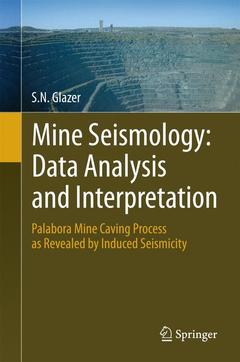Description
Mine Seismology: Data Analysis and Interpretation, Softcover reprint of the original 1st ed. 2016
Palabora Mine Caving Process as Revealed by Induced Seismicity
Author: Glazer S.N.
Language: English
Subjects for Mine Seismology: Data Analysis and Interpretation:
Approximative price 105.49 €
In Print (Delivery period: 15 days).
Add to cartPublication date: 05-2016
Support: Print on demand
Approximative price 137.14 €
In Print (Delivery period: 15 days).
Add to cartPublication date: 05-2018
Support: Print on demand
Description
/li>Contents
/li>Biography
/li>Comment
/li>
1. Introduction
2. Applications of Seismic Monitoring in Combating Rock Burst Hazard
3. Seismic Parameters and their Physical Meaning
4. Ranges of Parameters
5. Interpretation Methods of Mine Induced Seismicity
6. Palabora Seismic History
7. Palabora Caving Process as Evidenced by Induced Seismicity
8. Caving Process and Seismic Hazard
9. Problems Related to Software Versions
10. Seismic Preconditioning below Lift 1 Mine and its Influence on the Cavability of Lift 2 Cave
11. Palabora Lift 2 Mine Seismic System
12. Seismic Hazard Monitoring for Lift 2
Appendices
Index
Presents a detailed description of interpretation methods
Demonstrates the physical meaning of seismicity parameters
Discusses quantitative and qualitative seismology
Includes the seismological history of the caving process
Includes supplementary material: sn.pub/extras




